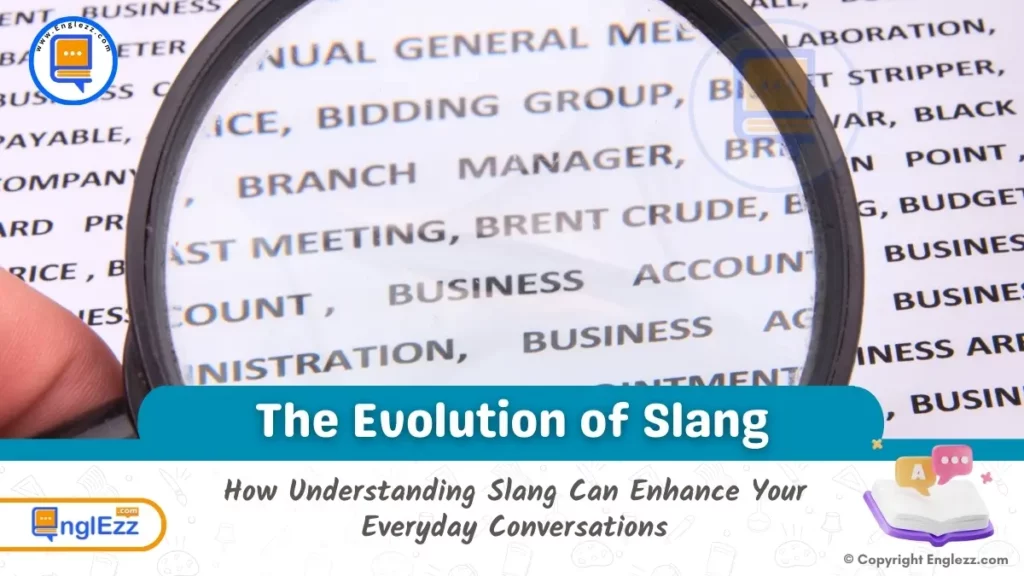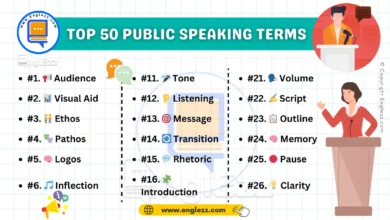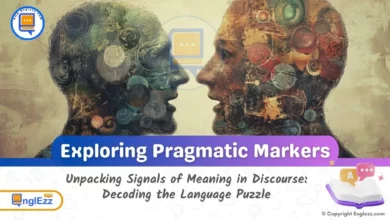Slang is an ever-evolving language phenomenon that reflects the social and cultural changes of each generation. From the cool vibes of the 60s to the lit culture of the 21st century, slang has come a long way. It’s a way for people to express themselves in a unique way, identifying with their peers and the world around them. Slang often reflects the changing times and societal norms, and it’s always interesting to see how language evolves with each generation.
Table of Contents
- The Evolution of Slang: How Language Changes Over Time
- The impact of slang on language and culture
- The origins of slang: How it emerges and spreads
- Early examples of slang: From Shakespeare to the Jazz Age
- The influence of subcultures on slang development
- The Internet Era: Slang in the Digital age
- The role of hip-hop and urban culture in shaping modern slang
- Regional slang variations and their significance
- The lifecycle of slang: From trending to outdated
- Slang’s impact on mainstream language and dictionaries
- The ongoing evolution of slang and its role in communication
- Conclusion:
The Evolution of Slang: How Language Changes Over Time
In this essay, we’ll take a look at the evolution of slang, explore popular phrases from different eras, and discuss how slang has impacted our language and culture. Join us as we take a journey through the history of slang, from its early beginnings to its current status as a defining aspect of modern culture.
The impact of slang on language and culture
Slang has always been a fascinating aspect of language and culture. It is a constantly evolving form of expression that reflects the dynamic nature of society. From the cool jargon of the 1950s to the lit phrases of today, slang has played a significant role in shaping our language and how we communicate with each other.

The impact of slang goes far beyond its usage in everyday conversations. It has the power to influence popular culture, music, fashion, and even advertising. Slang words and phrases often emerge from specific subcultures or communities and spread like wildfire, becoming an integral part of mainstream language.
One of the most intriguing aspects of slang is its ability to create a sense of belonging and identity among individuals. When using slang, we signal our membership to a particular group or subculture, instantly connecting with others who understand and use the same language. Slang allows us to express ourselves in a way that is unique and relatable to a specific community, fostering a sense of camaraderie and shared experiences.
Furthermore, slang can act as a linguistic time capsule, reflecting the social and cultural trends of different eras. Each generation brings forth its own set of slang terms, often influenced by political, technological, or social changes. By examining the evolution of slang, we can gain insights into the values, beliefs, and attitudes of different time periods.
In this blog post, we will take a deep dive into the fascinating world of slang, exploring its origins, its impact on language and culture, and how it has evolved over time. Join us on this linguistic journey as we uncover the intricacies of slang and its ever-changing nature. Get ready to discover how slang has transformed from cool to lit, and beyond.
The origins of slang: How it emerges and spreads
Slang, the colorful and ever-evolving language of a particular group or subculture, has fascinated linguists and language enthusiasts for centuries. But how does slang actually originate and spread? Let’s delve into the intriguing origins of slang and explore how it travels from the streets to the mainstream.
Slang typically emerges organically within specific communities or social groups. It is a way for individuals to express their identity, establish a sense of belonging, and create a distinct cultural code. Often, slang words or phrases are derived from a group’s shared experiences, values, or subversive expressions. This can include anything from popular culture references to insider jokes or even coded language used to evade authority.
Once slang takes root within a community, it begins to spread through interpersonal communication. Friends and acquaintances adopt and pass on these new words and phrases, leading to their wider usage. The rapid dissemination of slang is facilitated by social interactions, both offline and online, where individuals share their newly acquired linguistic gems with others.
In the age of social media, the spread of slang has reached unprecedented levels. Platforms like Twitter, Instagram, and TikTok serve as breeding grounds for viral slang, with users quickly adopting and popularizing new terms. Memes and hashtags play a crucial role in slang propagation, allowing individuals to participate in the creation and dissemination of linguistic trends.
Furthermore, popular culture, including music, movies, and television, has a significant influence on the spread of slang. When a beloved artist or TV show introduces a catchy phrase or a unique way of expressing oneself, it can quickly become integrated into the vernacular of fans and enthusiasts. This phenomenon often leads to the crossover of slang from niche communities to mainstream usage.
The journey of slang from its origins to widespread adoption is not always smooth. As slang moves into mainstream consciousness, it can lose its original subversive or exclusive nature. The commercialization and appropriation of slang by brands or individuals seeking to appear “cool” can dilute its significance and authenticity. Nevertheless, the constant evolution and adaptability of slang ensure that new linguistic expressions continue to emerge and captivate our language-loving hearts.
In conclusion, the origins of slang are deeply rooted in communal and cultural dynamics. From small pockets of subcultures to the vast expanse of the internet, slang travels and evolves, shaping our language and reflecting the ever-changing nature of society. Whether it’s the jargon of a specific profession or the catchphrases of a generation, slang continues to captivate us with its unique ability to express identity, foster connection, and add a touch of linguistic flair to our everyday conversations.
Early examples of slang: From Shakespeare to the Jazz Age
The use of slang is a fascinating aspect of language that has evolved over the centuries. While it may seem like a modern phenomenon, slang has been around for far longer than we might think. In fact, its roots can be traced back through history, with early examples found in the works of famous playwright William Shakespeare.
Shakespeare was a master of language, and his plays are filled with colorful slang expressions that were popular during the Elizabethan era.
- Phrases like “break the ice,” “hoodwinked,” and “wild goose chase” were all coined by Shakespeare and have managed to stand the test of time.
As time moved forward, the Jazz Age brought about a whole new wave of slang. This era, characterized by its lively music and rebellious spirit, gave birth to a plethora of slang terms that were used by the younger generation. Phrases like “bee’s knees,” “cat’s pajamas,” and “flapper” became popular as young people sought to establish their own unique identities.

These early examples of slang demonstrate how language is fluid and constantly evolving. Slang serves as a reflection of the cultural and social contexts in which it emerges, allowing people to express themselves in a way that is both playful and distinct. It is a testament to the creativity and adaptability of language, as it continues to evolve and change with each passing generation.
So, the next time you hear someone using a trendy slang term, remember that it is part of a long-standing tradition that has been passed down through the ages. From Shakespearean wit to the jazzy lingo of the 1920s, slang has always been a vibrant and integral part of our language, adding spice and flavor to our everyday conversations.
The influence of subcultures on slang development
Slang is not just a random assortment of words and phrases; it is a reflection of the society we live in and the various subcultures that exist within it. These subcultures, with their unique values, beliefs, and lifestyles, play a significant role in shaping and influencing the development of slang.
From the jazz musicians of the 1920s to the hippies of the 1960s, subcultures have been at the forefront of slang innovation. These groups often use slang as a way to create a sense of belonging and identity, to differentiate themselves from mainstream society, and to establish their own unique linguistic codes.
- For example, the Beat Generation of the 1950s, known for their rejection of traditional social norms, developed a distinct slang that reflected their countercultural attitudes.
- Words like “cool” and “hip” became synonymous with their rebellious spirit, and their use of slang helped to solidify their sense of community.
Similarly, the influence of subcultures can be seen in the evolution of slang in the hip-hop and skateboard communities. Hip-hop slang, with its origins in African American Vernacular English, has permeated mainstream culture and has become a significant part of contemporary slang. Words like “lit,” “dope,” and “flex” have crossed over from subcultural jargon to everyday language, thanks to the influence of hip-hop music and its associated lifestyle.
Skateboard culture, with its own unique vocabulary, has also contributed to slang development.
- Terms like “gnarly,” “shred,” and “kickflip” have become part of the lexicon, not only within the skating community but also in broader youth culture.
The influence of subcultures on slang development is a testament to the power of language as a tool for self-expression and cultural identity. It demonstrates how language constantly evolves and adapts to reflect the changing dynamics of society. So the next time you use a slang word, take a moment to appreciate the subcultures that have shaped it, and the rich tapestry of linguistic creativity that exists within our society.
The Internet Era: Slang in the Digital age
The advent of the internet has revolutionized the way we communicate and has had a profound impact on the evolution of slang. In the digital age, slang has become a language of its own, with new words and phrases constantly emerging and spreading like wildfire across social media platforms, instant messaging apps, and online forums.
One of the key factors influencing the development of digital slang is the need for brevity and efficiency in online communication. With character limits on platforms like Twitter, users have become masters of abbreviations and acronyms.
- Phrases like “LOL” (laugh out loud), “BRB” (be right back), and “OMG” (oh my god) have become a part of our everyday online lexicon.
Emoticons and emojis have also become an integral part of digital slang, allowing users to convey emotions and reactions in a concise and visually appealing manner. From the classic smiley face 🙂 to the more elaborate emojis depicting various expressions, objects, and even animals, these symbols have transcended language barriers and become universally understood forms of communication.
The internet has also given rise to memes, which often incorporate slang and pop culture references to convey humor or convey a particular message. Memes spread rapidly through social media, and their influence on slang cannot be underestimated. They have the power to popularize phrases and reshape language in ways that were previously unimaginable.
Additionally, the internet has provided a platform for niche communities to create their own slang, often related to specific interests or subcultures. Whether it’s gamers using phrases like “pwned” (meaning to dominate or defeat someone), the internet has allowed these groups to develop their own unique linguistic codes.
Furthermore, the digital age has introduced us to viral challenges and trends, which often come with their own slang terms. From “on fleek” to “lit” to “savage,” these phrases quickly become part of the cultural zeitgeist, infiltrating everyday conversations and even making their way into mainstream media.
In conclusion, the internet era has had a profound impact on the evolution of slang. It has given birth to a new language of brevity, incorporating abbreviations, acronyms, emoticons, emojis, memes, and niche community jargon. As technology continues to advance and our digital communication methods evolve, it is certain that the slang of the future will continue to shape and reflect our ever-changing digital landscape.
The role of hip-hop and urban culture in shaping modern slang
Hip-hop and urban culture have played a significant role in shaping modern slang. From the streets of the Bronx to the global phenomenon it is today, hip-hop has not only revolutionized the music industry but has also left an indelible mark on the way we speak.
In the late 1970s and early 1980s, hip-hop emerged as a cultural movement in New York City. With its roots deeply embedded in African-American and Latino communities, this musical genre became a powerful tool for expression and a platform for storytelling. As hip-hop artists used their lyrics to relay their experiences, struggles, and triumphs, they introduced a new wave of slang into the mainstream.
From the iconic rhymes of pioneers like Grandmaster Flash and The Furious Five to the poetic verses of Notorious B.I.G. and Tupac, hip-hop artists have continuously pushed the boundaries of language and introduced innovative vocabulary. Slang terms like “dope,” “fly,” “phat,” and “fresh” became synonymous with hip-hop culture, reflecting the confidence, style, and swagger of those who embraced it.
Moreover, hip-hop’s influence expanded beyond the music itself. The emergence of breakdancing, graffiti art, and fashion trends in urban communities further propelled the spread of slang. As these elements became integral parts of hip-hop culture, the language naturally evolved to encompass a broader range of expressions.
The impact of hip-hop on modern slang goes beyond mere words and phrases. It has become a cultural bridge that connects different communities and transcends geographical boundaries. With the rise of social media and the increasing popularity of hip-hop worldwide, slang born from this genre has become a global language that unites people, regardless of their background.
Today, the influence of hip-hop and urban culture can be seen in the everyday conversations of people from all walks of life.
- Slang terms like “lit,” “on fleek,” “savage,” and “woke” have become fixtures in our vocabulary, permeating social media platforms, pop culture, and even corporate advertising.
This highlights the lasting impact of hip-hop as a catalyst for linguistic innovation and cultural exchange.
In conclusion, hip-hop and urban culture have played a pivotal role in shaping modern slang. Through its music, fashion, and art, this movement has introduced a vibrant and dynamic lexicon that continues to evolve and resonate with people worldwide. As we explore the evolution of slang, it is impossible to ignore the profound influence that hip-hop has had, transforming words into powerful expressions of identity, creativity, and connection.
Regional slang variations and their significance
One fascinating aspect of slang is its ability to evolve and adapt within different regions. Just as languages vary from one country to another, the same can be said for slang. Regional slang variations not only reflect the unique cultural identities of different areas but also play a significant role in shaping local communities.
For instance, the phrase “cool” has been a popular slang term for many years. However, its usage and meaning may differ depending on where you are. In some regions, “cool” simply refers to something that is trendy or fashionable. In others, it can denote approval or agreement. These subtle variations in meaning highlight the nuanced ways in which slang can be interpreted and understood.
Exploring regional slang variations can also provide valuable insights into the history and social dynamics of a specific area. For example, certain regions may have developed their own slang words or phrases as a form of resistance or cultural expression. These variations often reflect the unique experiences and challenges faced by the local community, serving as a form of identity and solidarity.
Furthermore, regional slang variations can foster a sense of belonging and community pride. When individuals use and understand the slang specific to their region, it creates a shared language that brings people together. It becomes a way for locals to distinguish themselves from outsiders and reinforces a sense of cultural heritage.
The significance of regional slang variations goes beyond mere linguistic curiosity. It speaks to the rich tapestry of human expression and the diverse ways in which language continues to evolve. By celebrating and exploring these variations, we gain a deeper appreciation for the dynamic nature of slang and the communities that shape it.
The lifecycle of slang: From trending to outdated
Slang is a fascinating aspect of language that evolves and changes at a rapid pace. It’s a reflection of cultural shifts, generational gaps, and the ever-changing nature of society. Just as fashion trends come and go, so does slang.
Slang starts its journey by being coined within a specific community or subculture. It could be a phrase, a word, or even a unique way of speaking. As it gains popularity and recognition, it spreads like wildfire, especially in the age of social media where trends can go viral in a matter of hours.
- During its peak, slang becomes ubiquitous and part of everyday conversations.
- People from different backgrounds start using it to express themselves, relate to one another, or simply stay in the loop.
- It becomes the language of the moment, giving a sense of belonging and cultural currency.
However, as quickly as slang rises to fame, it can also fall into obscurity. The lifecycle of slang is unpredictable, and what is cool today may seem outdated tomorrow. As new trends emerge and cultural contexts shift, slang loses its appeal and becomes associated with a specific time period.
The reasons behind the decline of slang are manifold. Sometimes, overuse and misuse can lead to its demise. Other times, linguistic trends simply move on to something new and exciting. The constant influx of new words and phrases from different communities and cultures also contributes to the ever-changing landscape of slang.
While some slang terms manage to stand the test of time and become part of the vernacular, most fade away into distant memory. However, the beauty of slang is that it keeps reinventing itself. New words and expressions emerge, creating a fresh wave of linguistic innovation.
Understanding the lifecycle of slang is essential for staying up-to-date with the latest cultural trends and linguistic nuances. It allows us to appreciate the evolution of language and its dynamic nature. So, the next time you hear a trendy word or phrase, remember that its lifespan may be fleeting, but its impact on cultural expression is profound.
Slang’s impact on mainstream language and dictionaries
Slang has always been a fascinating aspect of language, constantly evolving and shaping the way we communicate. What was once considered “cool” or “hip” in one era may now be described as “lit” or “fire” in today’s lexicon. But slang is not just confined to young people or subcultures anymore; it has made its way into mainstream language and even dictionaries.
The impact of slang on mainstream language cannot be underestimated. It reflects the ever-changing nature of society and its influences, such as pop culture, technology, and social media. As new words and phrases emerge, they are quickly adopted by the younger generation and spread like wildfire through various platforms, becoming part of everyday conversations.
One interesting aspect of slang’s influence on mainstream language is its ability to capture the zeitgeist of a specific era. Slang words and expressions often encapsulate the social, political, and cultural trends of their time. They become a shorthand way of expressing shared experiences and attitudes, creating a sense of belonging and identity within a community.
Moreover, the inclusion of slang in dictionaries further solidifies its place in the lexicon. Dictionaries are no longer limited to proper and formal language; they now embrace the dynamic and fluid nature of slang.
- Words like “selfie,” “YOLO,” and “FOMO” have found their way into dictionaries, blurring the lines between what is considered standard language and what is colloquial.
The incorporation of slang into mainstream language also highlights the ongoing dialogue between different generations. Older generations may view slang as a degradation or corruption of language, while younger generations see it as a way to express their unique perspectives and experiences. This generational divide can spark debates and discussions about the evolution of language and its role in shaping society.
In conclusion, slang has evolved from being a niche subculture language to a prominent feature of mainstream language and dictionaries. Its impact on language and communication cannot be ignored, as it reflects the ever-changing nature of society and captures the spirit of different eras. So next time you hear a new slang term, take a moment to appreciate its role in shaping our language and cultural landscape.
The ongoing evolution of slang and its role in communication
In conclusion, the evolution of slang is an ongoing phenomenon that continues to shape the way we communicate. Slang has always been a part of human language, serving as a tool for self-expression and identity formation within various communities.
Over time, slang has adapted and evolved to reflect the changing cultural and social landscapes. From the cool jargon of the 1950s to the lit terminology of today, slang offers a glimpse into the ever-changing nature of language and its ability to adapt to new trends and contexts.
Moreover, slang serves as a form of linguistic creativity, allowing individuals to play with language, create new words, and establish unique connections within their communities. It often reflects the values, experiences, and attitudes of a particular group or generation, providing insight into their shared cultural references and identities.
In the digital age, the rapid dissemination of slang through social media platforms and online communities has accelerated its evolution. Internet slang, memes, and abbreviations have become prevalent in modern communication, blurring the boundaries between online and offline language use.
However, while slang can be fun and expressive, it is important to recognize its context-specific nature. Slang may not be universally understood and can create barriers to effective communication, especially across different age groups or cultural backgrounds. It is essential to be mindful of the audience and context when using slang to ensure clear and meaningful communication.
Conclusion:
In conclusion, the evolution of slang continues to shape the way we communicate, reflecting the changing times and providing a unique insight into our cultural zeitgeist. As language and society continue to evolve, so too will slang, offering new expressions, connections, and interpretations for generations to come.
We hope you enjoyed our exploration of the evolution of slang from “cool” to “lit” and beyond. Slang is a fascinating aspect of language that reflects the cultural shifts and trends of each generation. As language continues to evolve, it’s important to stay curious and open-minded about new slang terms that emerge.
Whether you’re a language enthusiast or simply curious about the ever-changing landscape of communication, understanding the evolution of slang adds a vibrant layer to our understanding of society. So go forth, stay hip, and keep those lit conversations flowing!








